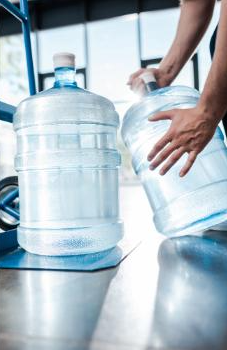What is Resin in Water Softeners?
A water softener consists of a tank with a bed of plastic spheres known as resin. These beads are made of a polystyrene material and bonded together by a compound called divinyl benzene. They are crisscrossed in a pattern that looks like a chain link fence.
(For installing water filtration system, contact us today!)

Resin is used in water softeners to remove hardness minerals from the water. When calcium and magnesium ions enter the resin, they get a negative charge from the resin. This is the opposite charge that they have in a pure form.
As the water flows through the resin, the calcium and magnesium ions cling to the resin beads. The resin then loses sodium and/or potassium ions during the ion exchange process, which removes them from the water supply.
When the resin reaches its maximum capacity (usually about 10 years) it is time for regeneration. This process uses a salty brine solution to flush out the hard mineral ions from the resin.
Depending on the size of your system, it may require a regeneration cycle every few months. In some cases, you might need to regenerate every other year or so, especially in areas with high levels of dissolved iron or chlorine in the water.
How often you need to replace your resin depends on several factors, including the amount of hardness in your water, the chlorine levels in your tap water, and how much you use the system. Most manufacturers recommend replacing your water softener’s resin every 10 years.
What is the resin in my water softener?
There are a variety of different types of water softener resins. They vary in strength, durability, and cost, but they all have a common purpose: to remove hard minerals from the water.
Many water softeners use the same type of ion exchange resin. The most popular is a cross-linked styrene-divinylbenzene strong acid cation resin in bead form.
The number of “links” in the resin will determine its strength and durability. Most modern water softeners use 8% cross-link resin, but some of the high-performance models use 10%.
Most of the water softeners that use this type of resin also include a fine mesh media in their tank. This media can remove a range of contaminants from the water, but isn’t as effective on hardness minerals as standard resin.
If you want to increase the efficiency of your water softener, you can add a gravel bed. This can help reduce the number of minerals that need to be exchanged during ion exchange and provide a greater pore space for the resin to bind with the minerals.
How do I know when my resin needs to be replaced?
In addition to testing the water for hardness and meter readings, it is important to track your system’s performance. Monitoring daily hardness levels, meter readings, flow rates, and inlet and outlet pressure will help you recognize when your system needs regeneration or cleaning.
As the resin in your water softener begins to degrade, it is important to replace the bed of resin in order to keep it working properly. This will allow the softener to last longer and prevent expensive breakdowns down the road.

